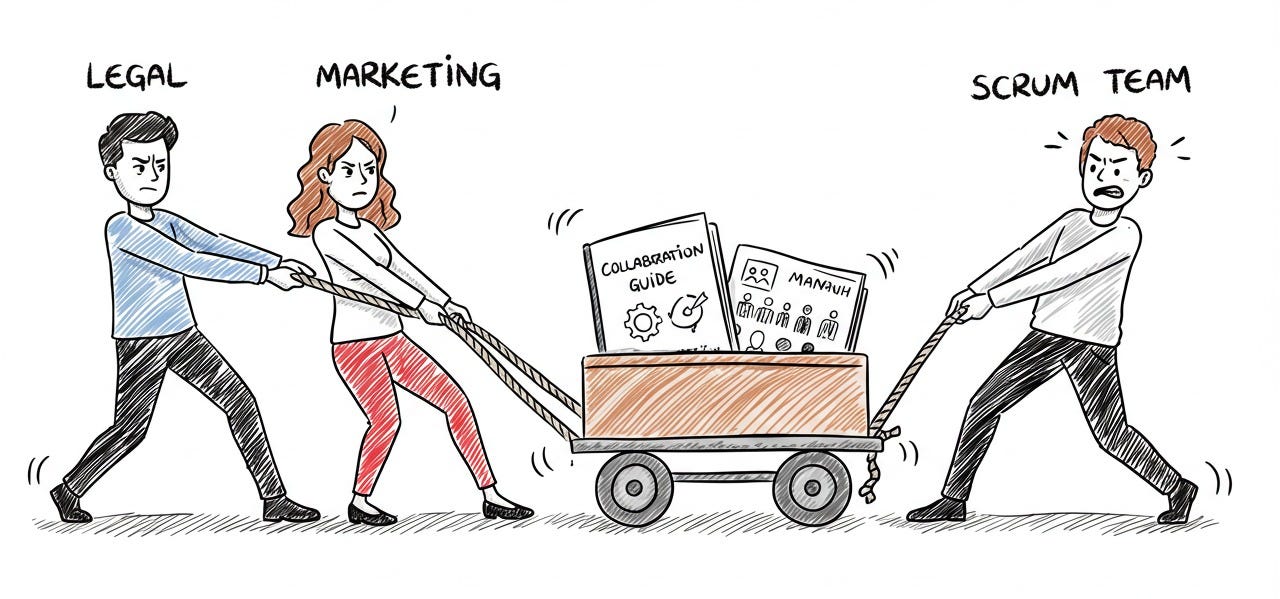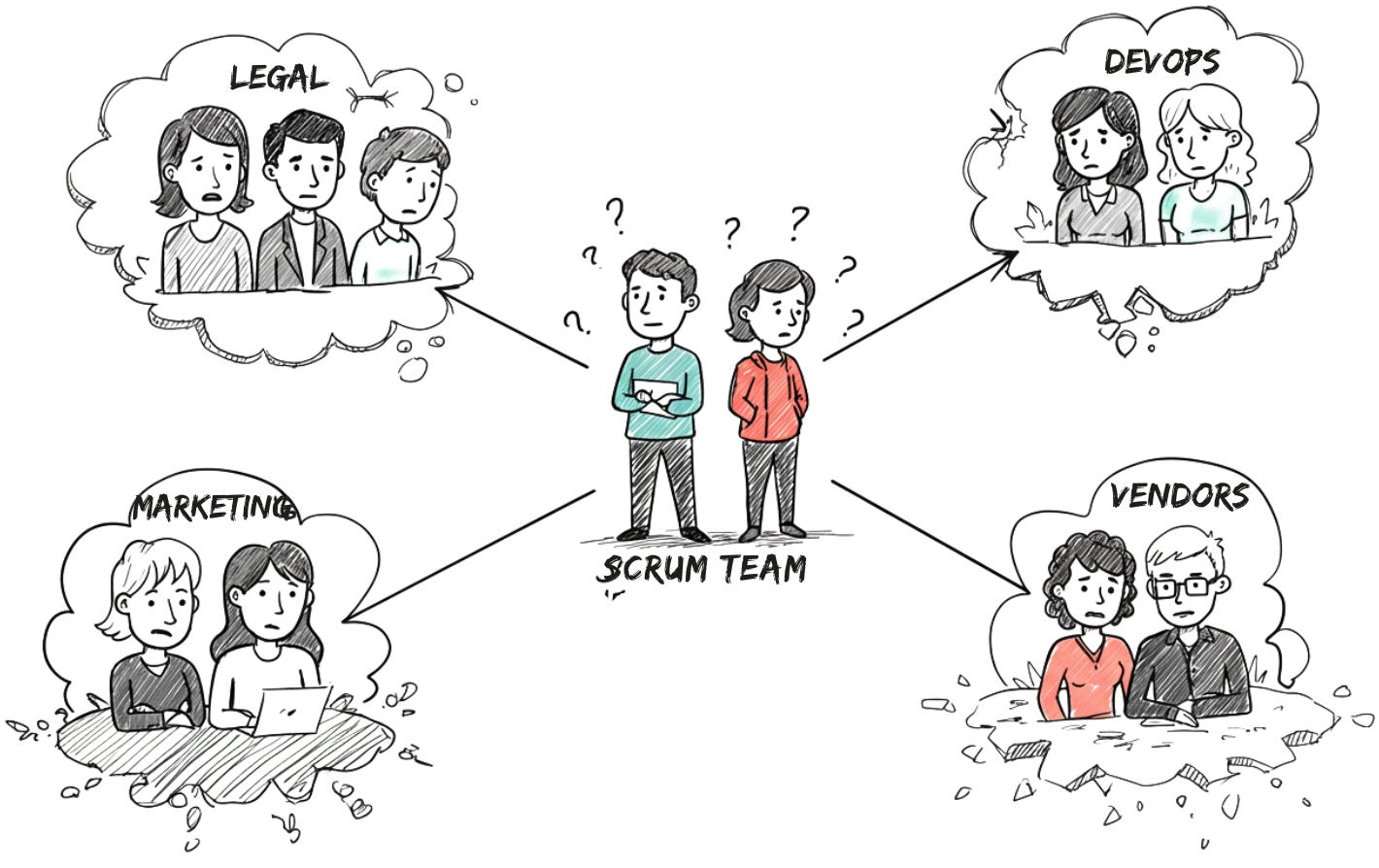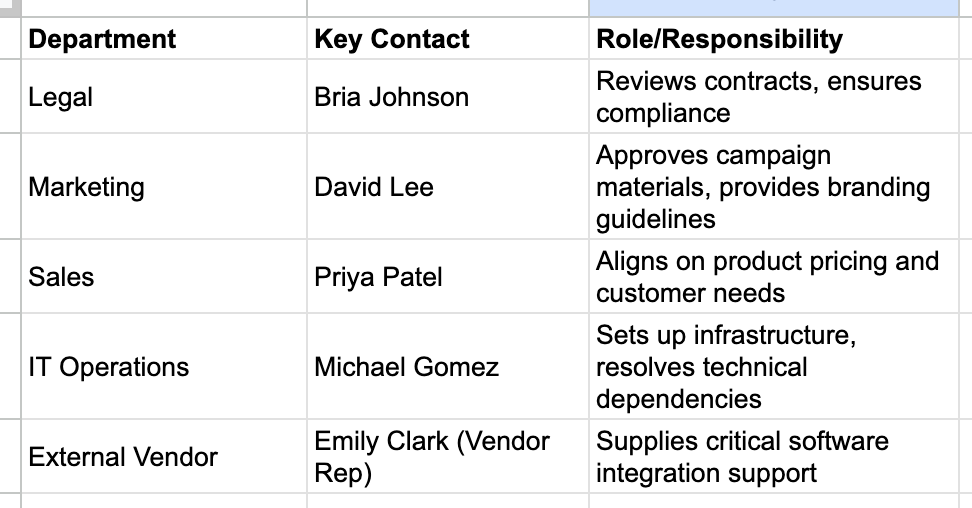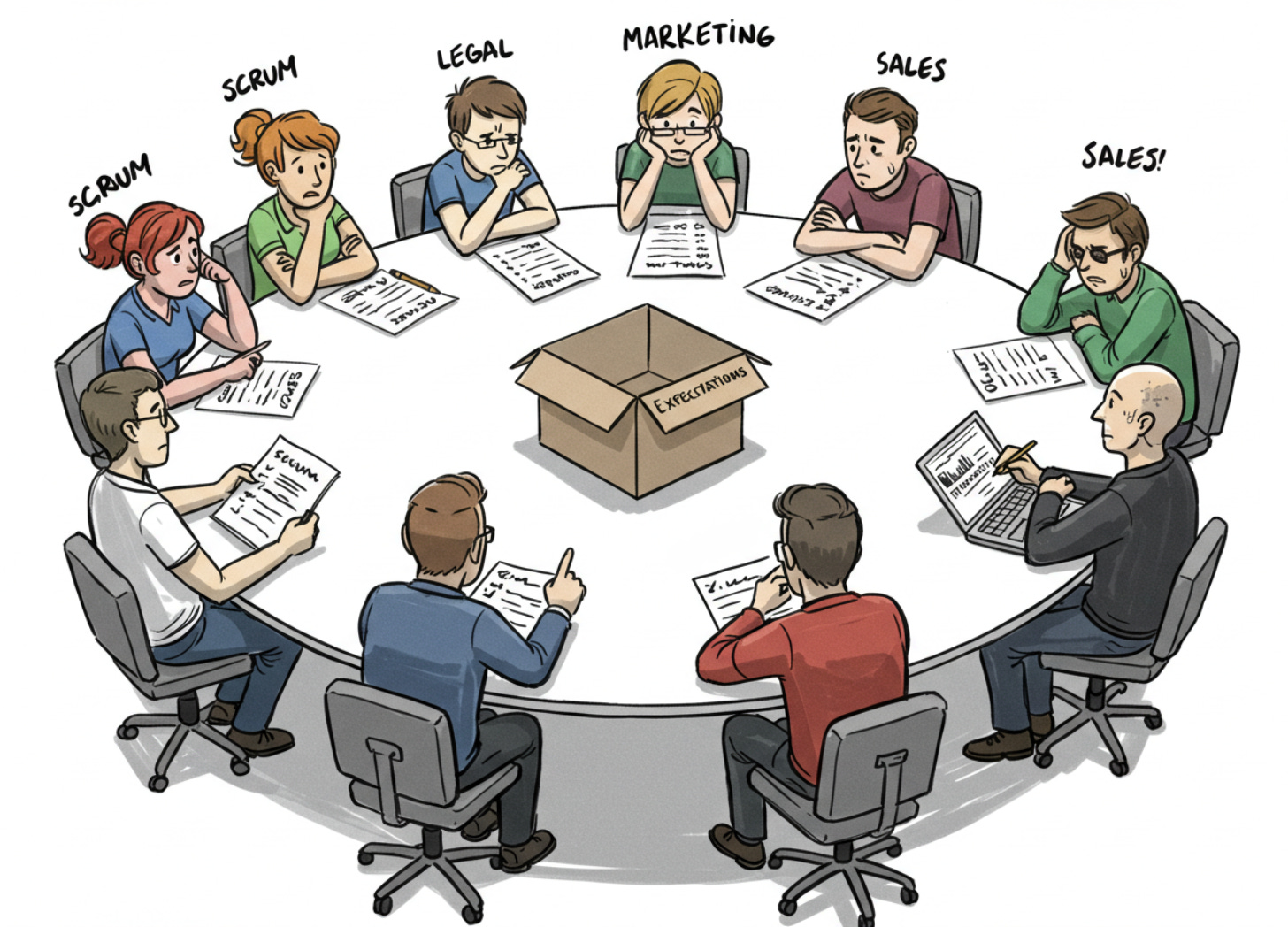Cross Team Collaboration Made Easy
🎁 Notion Template: To help establish communication and collaboration with dependent teams and departments
Hello 👋, It’s Vibhor. Welcome to the 🔥 paid member only🔥 edition of Winning Strategy: A newsletter focused on enhancing product, process, team, and career performance. Many subscribers expense this newsletter to their Learning & Development budget. Here’s an expense template to send to your manager.
Have you ever felt like you're playing a game of telephone tag with different departments or dependent teams?
"We're blocked waiting for Legal's review."
"Marketing needs to sign off first."
"I'm not sure who has the final call here."
Does this ring a bell?
A few years back, I facilitated a situation where a critical feature was stuck in limbo for three weeks. The Scrum team had built something brilliant, but it was gathering dust while three different departments played email tag.
But!
When we finally got everyone in the same room, it took exactly 45 minutes to resolve what had been a three-week deadlock.
It’s shocking how collaboration can simplify seemingly complex things in just minutes.
I can't emphasize this enough:
Collaboration doesn't fail because people don't want to work together. It fails because we don't have the right systems, the right collaboration “plan” in place.
And that's completely fixable.
In this post, I'll share a simple framework that has helped me and my teams break down these silos for good.
If your team ever struggled with misaligned expectations, late feedback from stakeholders, or communication bottlenecks, this is for you.
Let’s get started.
Step #1: Identify Dependent Teams
The first step to building a successful CTCP, i.e., Cross-Team Collaboration Plan, is simple: determine who is involved.
Who are the teams or departments your Scrum team relies on?
Legal? Marketing? Sales? Maybe even external vendors?
These are your dependent teams, and without their input, progress can grind to a halt.
Here’s where to start:
Action
List every department or team that interacts with your Scrum team. Think broadly, don’t stop at the obvious ones. Dependencies often hide in unexpected places.
How to Do It
Talk to your team. Ask them, “Who do we usually wait on for approvals, feedback, or sign-offs?”
Use Process Mapping. Examine your current processes and identify where handoffs occur.
Identify key decision-makers. For each dependent team, determine who is responsible for what.
Deliverable of this step
By the end of this step, you’ll have a stakeholder map that includes:
Department names (Legal, Marketing, DevOps, etc.)
Key contacts (whom your team needs to talk to when things get stuck).
Roles and responsibilities (What each team or person is accountable for).
Here's how it looks:
A stakeholder map might look something like this:
This map gives you a clear snapshot of who’s responsible for what and where potential bottlenecks might occur.
Step #2: Define Collaboration Needs
Now that you know who’s in the picture, it’s time to define how you’ll work together.
Collaboration often fails because expectations are unclear.
What does each team need from your Scrum team? What do they need to provide in return? Without answers to these questions, delays and misunderstandings are unavoidable.
What's my approach to getting this information?
Bringing everyone together.
Schedule a focused workshop. I typically allocate 90 minutes with representatives from each of the dependent teams identified in Step 1.
During the workshop, focus on these 3 questions:
What information do they need from your Scrum team?
For example, do they need regular updates, detailed documentation, or demo access?What information must they provide to your Scrum team?
Are they responsible for approvals, feedback, or delivering specific inputs?Where are the potential bottlenecks or risks in collaboration?
Identify areas where delays or miscommunication are most likely to occur.
Deliverable
At the end of this step, you’ll create a Collaboration Needs Document that outlines:
Input/output expectations for each dependent team. (e.g. Legal needs finalized specs from the Scrum team; Scrum team needs compliance feedback from Legal).
Critical dependencies and their timelines. (e.g. Marketing needs two weeks to review launch materials).





